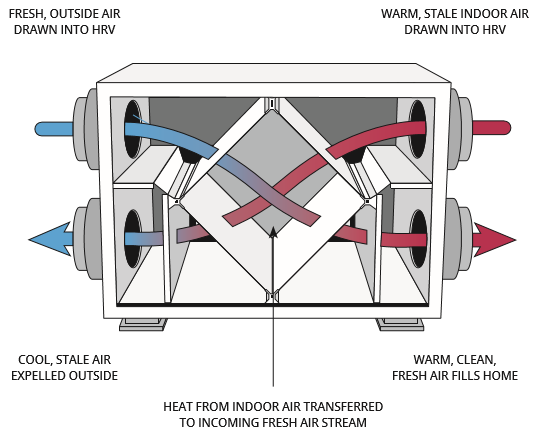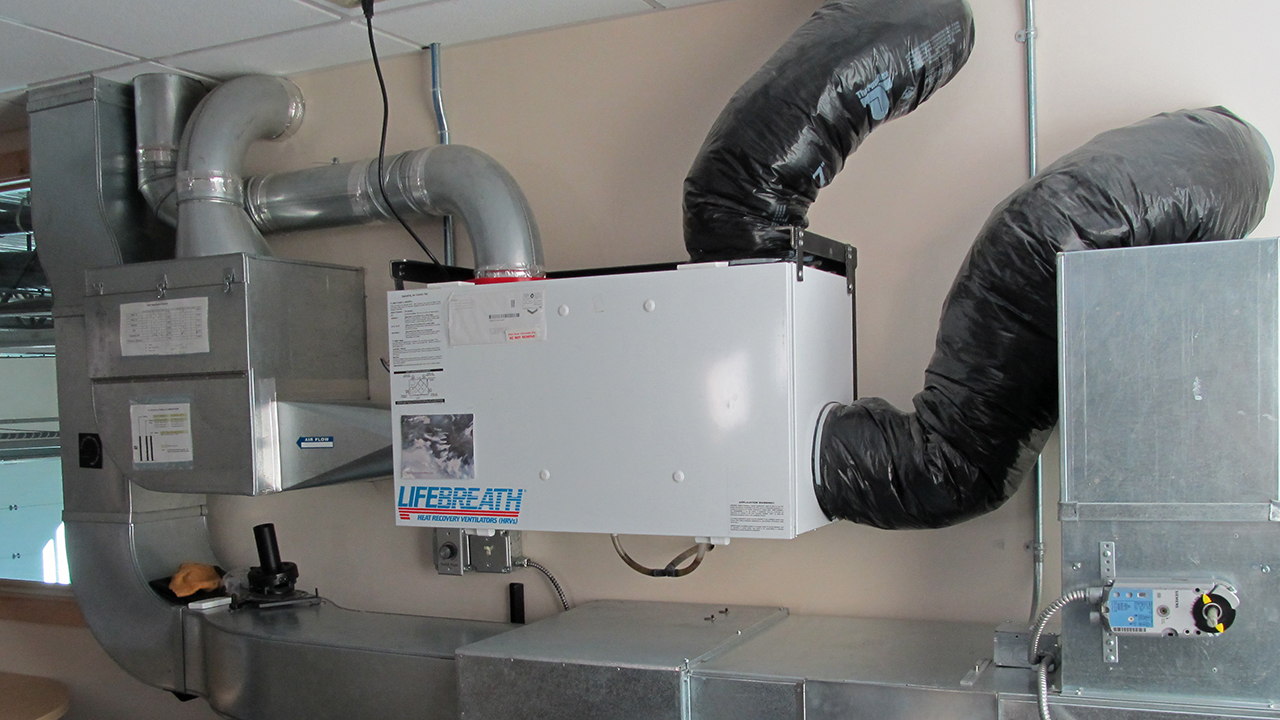How Heat Recovery Ventilation Enhances Indoor Air Top Quality and Reduces Energy Prices
Heat Recovery Ventilation (HRV) systems play a necessary role in boosting indoor air top quality while concurrently lowering power expenses. By effectively exchanging stagnant interior air with fresh outside air, HRVs aid preserve ideal moisture and reduce contaminants. Additionally, their capability to recoup heat from outgoing air decreases the pressure on heating and cooling down systems. As energy expenses remain to rise, comprehending the complete potential of HRV systems ends up being increasingly essential for property owners and businesses alike.
Comprehending Heat Recovery Ventilation Equipments

Heat recovery ventilation (HRV) systems play an important function in boosting indoor air quality, specifically in modern, energy-efficient structures. These systems are developed to move heat from the outbound stale air to the incoming fresh air, thus minimizing energy loss while keeping suitable temperature degrees indoors. HRVs include a warmth exchanger, fans, and ductwork, facilitating the constant blood circulation of air. By getting rid of interior pollutants and presenting fresh air, HRVs help to balance humidity levels, avoid mold development, and decrease irritants. The effectiveness of HRV systems depends on their capacity to recoup as much as 80% of the warmth from the tired air, promoting energy preservation while making certain a healthy and balanced interior setting. Their combination is essential in achieving sustainable living techniques.
The Importance of Indoor Air High Quality
Indoor air quality (IAQ) is a crucial variable influencing the health and wellness and health of occupants in any atmosphere. Poor IAQ can result in various health issues, consisting of breathing issues, allergies, and exhaustion. In addition, it can worsen status quo such as bronchial asthma. Aspects contributing to reduced IAQ consist of toxins from interior resources like cleaning up representatives, mold and mildew, and inadequate ventilation. Consequently, keeping good IAQ is important for promoting a secure and comfortable living or working area. Reliable methods to improve IAQ include regular tracking of air quality, correct ventilation systems, and lessening the use of hazardous materials inside your home. By focusing on IAQ, individuals can guarantee a much healthier environment that promotes performance and overall lifestyle.
Power Performance Benefits of HRV Systems
Lots of home owners and building managers are progressively identifying the power efficiency benefits of heat recovery ventilation (HRV) systems. By transferring warm from tired interior air to inbound fresh air, HRV systems significantly minimize the power required for heating and air conditioning. This process minimizes reliance on traditional official statement heating and cooling systems, causing lower energy bills. Additionally, HRVs help maintain a well balanced indoor environment, avoiding extreme heating or cooling demands. The ability to recoup approximately 90% of the warm from outbound air likewise supports sustainability efforts by decreasing overall power intake. Subsequently, HRV systems add not only to cost financial savings however likewise to a decreased carbon footprint, straightening with the growing focus on energy-efficient structure techniques.
Setup and Upkeep Considerations
The effective implementation of heat recovery ventilation (HRV) systems requires mindful factor to consider of installment and upkeep variables to assure peak efficiency. Appropriate positioning of the HRV system is necessary, as it needs to be set up in a place that makes the most of airflow while decreasing noise disturbance. In addition, ductwork should be suitably sized and insulated to stop power loss. Regular upkeep, consisting of filter substitute and system cleansing, is important to secure optimal functionality and interior air top quality. Proprietors must develop a routine upkeep schedule to determine and attend to potential issues prior to they escalate. Cooperation with skilled specialists during both setup and upkeep stages can enhance the durability and effectiveness of HRV systems, inevitably resulting in much better interior atmospheres and decreased power expenses.
Real-World Applications and Success Stories
Exploring real-world applications of warm recovery air flow (HRV) systems reveals their substantial influence on interior air quality and power efficiency throughout different setups. In domestic structures, useful link house owners have actually reported enhanced air top quality, leading to fewer allergies and respiratory concerns. Schools implementing HRV systems have actually kept in mind boosted pupil concentration and reduced absenteeism due to better air flow. Business buildings, such as workplaces and retail areas, have experienced lower energy expenses and raised worker you can check here performance. A business office in a pleasant climate achieved a 30% decrease in power costs after mounting an HRV system. These success stories demonstrate that HRV innovation not only adds to much healthier atmospheres however also gives substantial economic benefits, making it an important investment for numerous markets.
Often Asked Questions
Can HRV Equipments Decrease Allergens in Indoor Air?
The performance of HRV systems in minimizing indoor irritants mainly hinges on their capacity to filter and exchange air. HRV Heat Recovery Ventilation. By constantly replacing stagnant air, these systems can significantly lower allergen levels throughout indoor settings

How Does Moisture Affect HRV System Performance?
Moisture greatly influences HRV system efficiency; high levels can lead to condensation, lowering effectiveness, while low moisture might boost air exchange. Stabilizing moisture is essential for perfect procedure and keeping indoor air high quality.
Are HRV Systems Noisy During Operation?
HRV systems can produce varying noise levels throughout procedure, relying on their style and setup. Some systems operate quietly, while others may generate noticeable sound, especially at greater air movement setups or when inadequately kept.
What Is the Ordinary Life Expectancy of an HRV System?

Can HRV Systems Be Used in All Environments?
HRV systems can be used in various environments, however their efficiency may vary - HRV Heat Recovery Ventilation. In severe temperatures, adjustments or additional systems may be essential to ensure perfect efficiency and comfort while maintaining indoor air quality